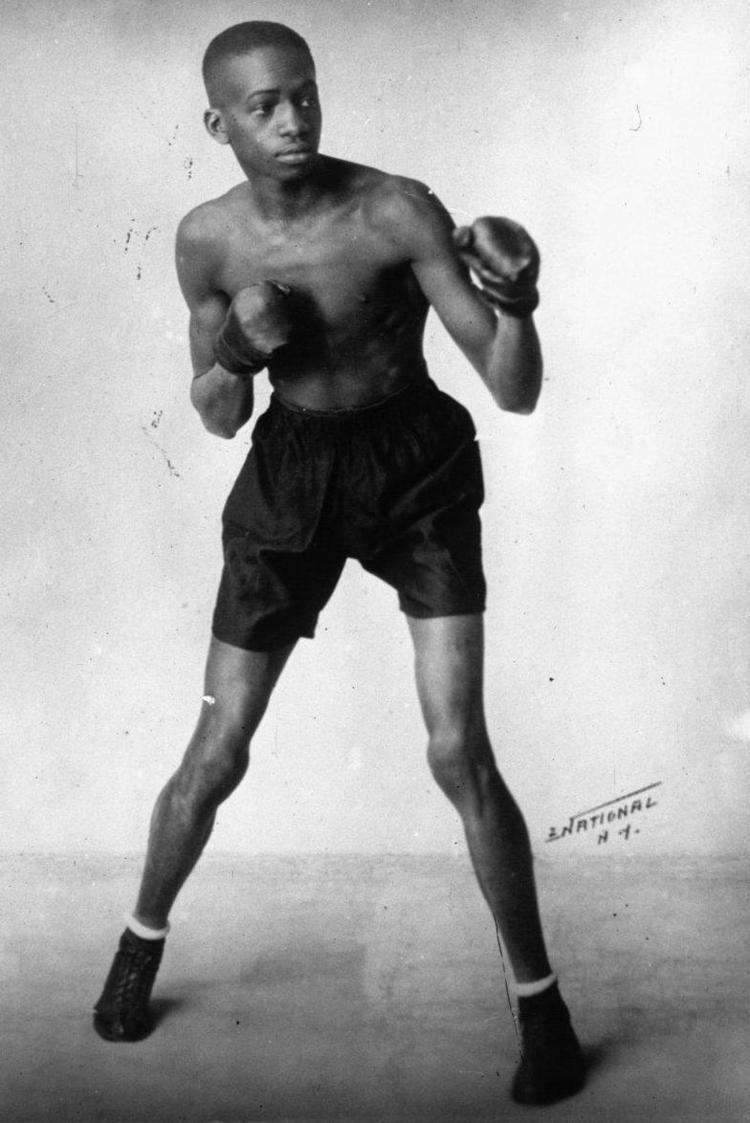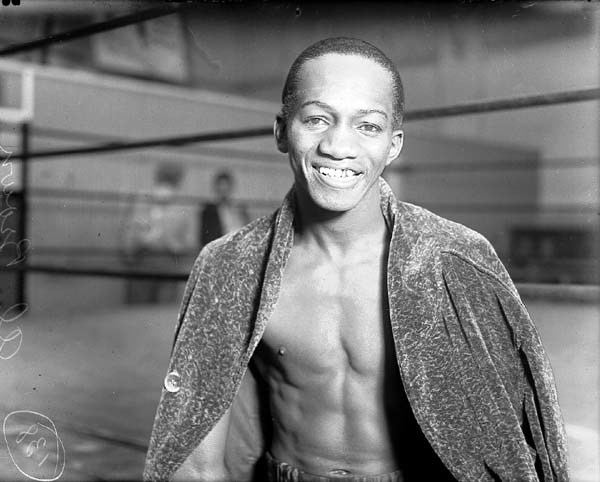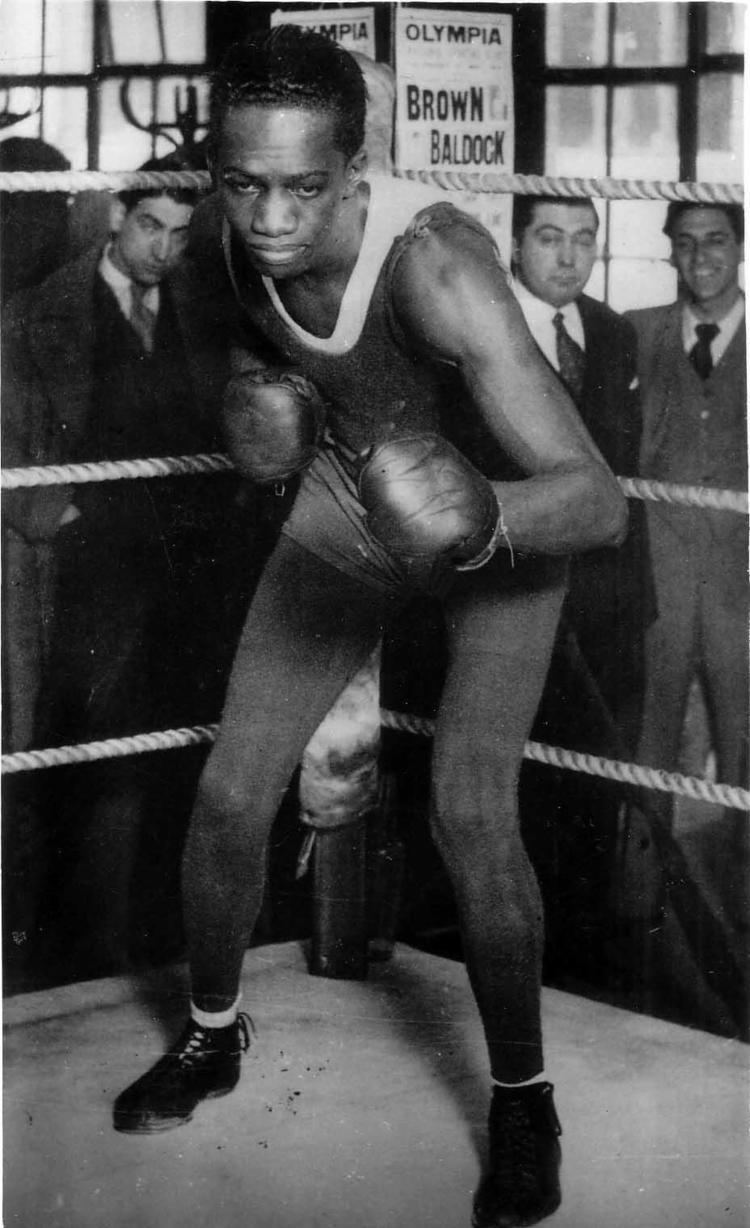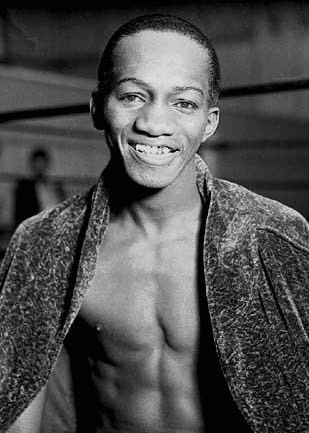Real name Alfonso Teofilo Brown Name Panama Brown Total fights 161 Nationality Panamanian Role Boxer Draws 13 | Stance Orthodox Height 1.8 m Division Flyweight, Bantamweight Wins 129 Martial art Boxing | |
 | ||
Nickname(s) Panama Al Brown; Kid Theophilo Rated at Flyweight, Bantamweight Died April 11, 1951, New York City, New York, United States | ||
Panama al brown highlights
Alfonso Teofilo Brown (1902–1951), better known as Panama Al Brown, was a bantamweight boxer from Panama who made history by becoming boxing's first Hispanic world champion. Brown was a native of the city of Colón.
Contents

Brown fought during the early 20th century, a period in which boxing records were not well kept. He is said to have fought professionally 164 times. He stood about six feet tall, an extraordinary height for a bantamweight/featherweight. His long arms contributed greatly to his success in the ring.

Panama al brown vs maurice dubois
Biography

Alfonso Teofilo Brown born in the City of Colón, in the Caribbean coast of Panama. His first real exposure to boxing came when he saw American soldiers boxing when he was a young adult clerk for the United States Shipping Board at the Panama Canal Zone.

Brown turned pro in 1922 under the guidance of manager Dave Lumiansky. His first fight took place on March 19, 1922, when he beat Jose Moreno by a decision in six at Colon. By his seventh fight, December 13 of that same year, he beat Sailor Patchett by a fifteen round decision, to earn the Isthmus Flyweight title.
On September 22, 1923, he had his first fight abroad, drawing (tying) in four rounds with Johnny Breslin, at New York. He very quickly established a presence upon relocating to New York in 1923.
His rise was rapid; a year after his move to New York, The Ring magazine rated him the third best flyweight in the world; two years later, the sixth best bantamweight.
Brown began campaigning extensively across the United States before he suffered his first loss, at the hands of Jimmy Russo on December 6, 1924, by decision in twelve. He would later avenge that defeat, and he beat Davey Abad and Willie LaMorte before being disqualified in the first round against Frankie Murray on July 11, 1926. Despite that setback, he kept on campaigning successfully and, on November 10 of that year, he knocked out Antoine Merlo in his Paris debut.
He enjoyed Paris so much that he decided to stay there for the rest of his life. He became a hugely popular boxer in France, and fought on the European continent 40 times between 1929 and 1934. Over the next three years, he beat several fighters there, including former world champion Eugene Criqui.
During his time in France, he joined Josephine Baker's La Revue Nègre as a tap-dancer. His lover Jean Cocteau helped him.
An interesting case happened when he fought Gustav Humery, on January 29, 1929. Brown and Humery had previously agreed that they would not salute by touching gloves before the fight, and when the bell rang, Brown struck quickly, breaking Humery's jaw with his first punch and sending him to the floor. With the referee's count of ten seconds, the fight lasted a total of fifteen seconds, one of the quickest knockouts in boxing history.
Brown made history on June 18 of the same year by becoming the first Hispanic world champion in history. He beat Gregorio Vidal by a fifteen round decision to win the vacant world's Bantamweight title back at New York, in front of 15,000 fans.
Brown became a national idol in Panama, and an instant celebrity almost everywhere else in Latin America after his win. Magazines such as Ring En Español were talking about his achievement sixty years after Brown made history.
Soon after winning the title, he lost a ten round, non-title fight to Battling Battalino, another legendary boxer.
Brown retained his title nine times and had countless other fights before a rematch with Hummey that ended in disaster: on May 17, 1934, Brown was disqualified in round six at Paris for using illegal tactics. A riot started and Brown suffered several broken bones and was sent into semi-unconsciousness by fans before the police could help him. Twenty minutes later, the locale where the rematch was held had almost been entirely destroyed.
For his next title defense, on November 1 of the same year, he travelled to Tunis, Tunisia, where his opponent, Victor Perez, was counted out in round ten while on the floor, claiming that Panama Al had hit him with an illegal blow.
On June 1, 1935, he lost the title to Baltasar "Sangchili" Belenguer Hervás of Spain, by a fifteen round decision, at Valencia, Spain. They had a rematch on March 4, 1938, with Brown avenging his earlier loss with a fifteen round decision, but by then, Sixto Escobar of Puerto Rico had already taken the world Bantamweight championship. His rematch win over Sangchili is believed to be his last great night and, bowing to Cocteau's wishes, Brown vowed to retire after one more fight. That came in 1939 against Valentine Angelmann in Paris (Brown stopped him in eight rounds).
With the advent of the World War, Brown moved to the United States, settled in Harlem and tried to find work of the cabaret sort he performed in Paris when not fighting. There was none and before long he was fighting again, but not well.
Brown went on fighting until 1942, challenging unsuccessfully for the Panamanian Featherweight title on September 30, 1942, when he drew with Leocadio Torres, but retiring as a winner, defeating Kid Fortune by a decision in ten rounds on December 4 of the same year.
Not long after, he was arrested for using cocaine and deported for a year. He went back to New York afterward and, in his late 40s, took a lot of beatings while serving as a sparring partner for up-and-comers at a gym in Harlem, making a dollar a round.
Brown died penniless of tuberculosis in New York City in 1951. He had fainted on 42nd Street. The police thought he was drunk and took him to the station. Eventually he was transferred to Sea View Hospital. He died there on April 11, unaware that not long before, one of the newspapers in Paris had begun talks about organizing a fund drive to pay for his trip home.
Forty-one years later, Brown was inducted into the International Boxing Hall of Fame.
After his death, writer Eduardo Arroyo wrote a biography of Panama Al, titled Panama Al Brown, 1902-1951.
Panama Al Brown's final record is believed to have been 123 wins, 18 defeats and 10 draws, with 55 knockouts, placing him in the exclusive list of boxers who have won 50 or more wins by knockout. He was the recognized bantamweight world champion for six years and over that time made 11 title defenses against the best bantamweights and featherweights of his era.
